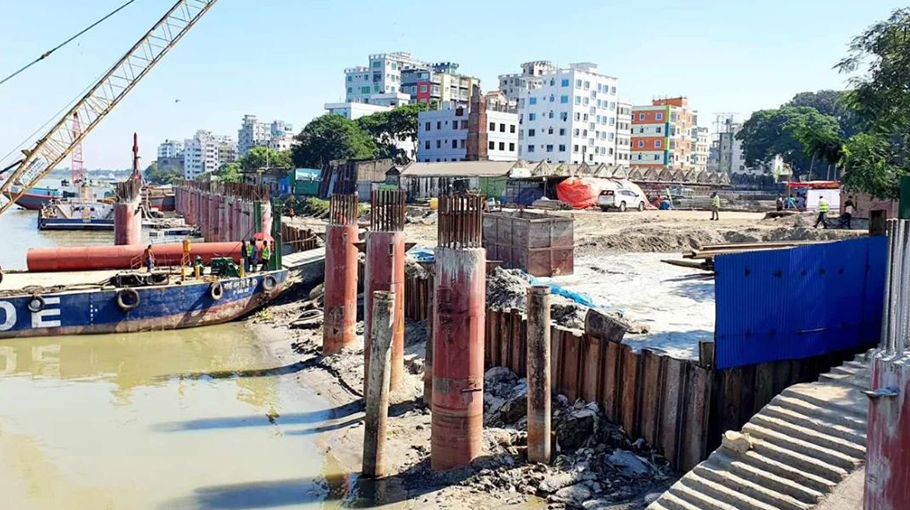Construction of Ashuganj cargo terminal begins

The construction of cargo terminal at Ashuganj port in Brahmanbari has begun, more than a decade after its declaration as a port.
Once completed, the international-standard river port is expected to handle loading and unloading of at least 10 lakh metric tonnes of products annually. It will also play a significant role in facilitating cross-border trade.
According to traders and port authorities, the Ashuganj cargo terminal near the old ferry ghat on the Meghna River was declared a river port in 2010. The port primarily handles the loading and unloading of fertilizers, rods, cement, coal, and food grains such as lentils, maize, and rice.
For years, thousands of metric tonnes of goods were handled using two makeshift jetties due to the lack of modern facilities. In 2011, India first used this port to transport heavy electricity equipment from Kolkata’s Haldia Port.
Local traders have long demanded the modernization of the port due to the lack of covered storage, truck yards, and proper side roads in the area. These issues have led to valuable imported and exported goods being damaged by rain and sunlight. Though delayed, the initiative to modernize the Ashuganj River Port has brought satisfaction to local traders.
They believe that once operational, the port will benefit traders from 12 surrounding districts, including the larger Mymensingh and Sylhet divisions in eastern Bangladesh. It will also significantly reduce logistical challenges in domestic product exports.
Mohammad Zakir, a trader at Ashuganj Port, said that a modern jetty will greatly enhance trade activities. He expressed optimism that the port would attract international goods, creating employment opportunities for the local population.
Another trader, Shahjahan Siraj, shared similar sentiments, saying that the development of a modern port would improve infrastructure, such as roads, and encourage traders to use the port for transporting goods. He expressed hope for the port's construction to be completed quickly.
Project Director of Ashuganj Port, Ayub Ali, said that the new port will include three new jetties, as well as facilities such as storage areas, open storage, a welfare office, a canteen, a gate and employment office, a substation, a pump house, toilet blocks, and an approach gate. The improvements will enhance the port's capacity for handling and storing up to 150,000 tonnes of cargo annually.
BIWTA Chairman Commodore Arif Ahmed Mostafa emphasized the historical importance of the port. He said that once its facilities are upgraded, the port’s significance will increase both domestically and internationally, attracting greater usage.




